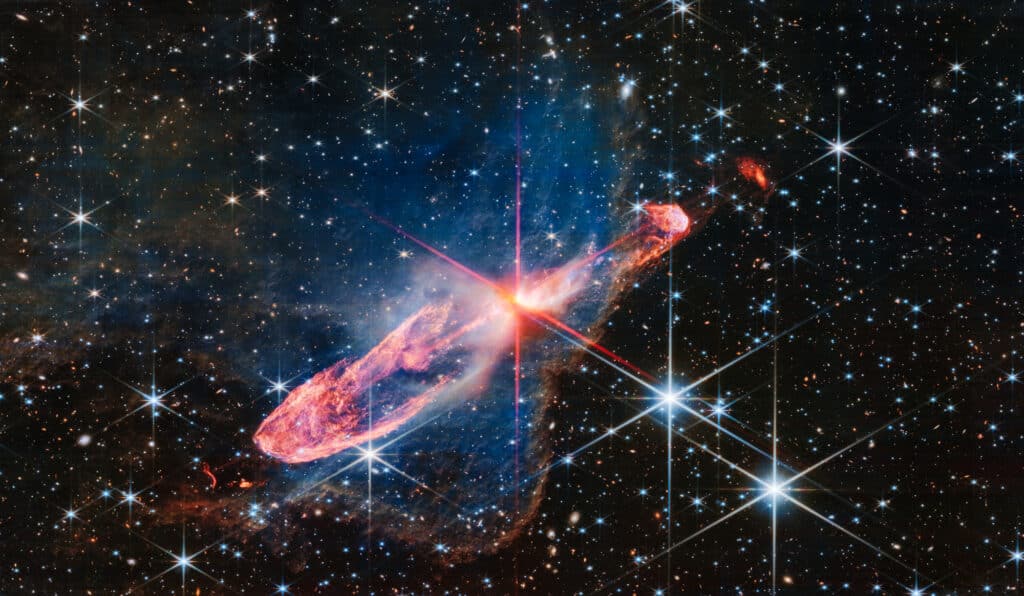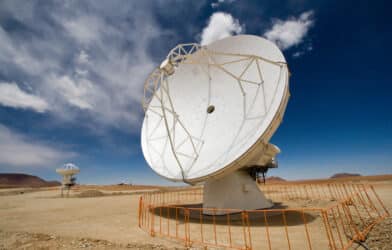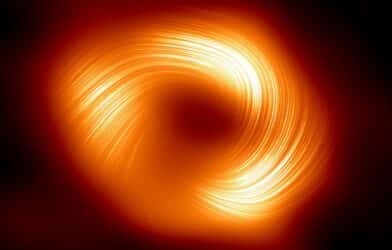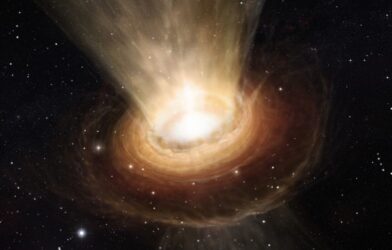NASA’s James Webb Space Telescope (JWST) has taken a jaw-dropping image of a pair of young stars, known as Herbig-Haro 46/47, that are in the process of forming. The snapshot provides an unprecedented look at the dynamic interplay of gas, dust, and star formation in the universe, revealing features that look like cosmic fireworks.
Herbig-Haro 46/47 is a pair of young stars that are hidden within a disk of gas and dust. As these stars grow, they feed off this material. In simple terms, imagine the young stars as babies still attached to umbilical cords that feed them.
JWST’s image displays two main features fanning out from these stars, shown in fiery orange. This phenomenon is like a cosmic fountain, where the young stars intermittently spew out material in jets. These jets are important because they help regulate how big the stars can get.
When jets of newer material collide with older material, they create beautiful, billowing shapes—much like what you might see in a fountain that is turned on and off randomly. This cosmic fountain changes in speed and amount, depending on how much “food” the young stars have consumed at a given time.
JWST Unveils the Invisible
A nebula, which is a huge cloud of gas and dust in space, surrounds the young stars. The nebula is dense and normally appears almost completely black in visible light. However, the James Webb Space Telescope’s advanced technology allows us to see through the cloud and brings more features into focus, making the whole scene look effervescent and vibrant.
This nebula isn’t just eye candy; it plays a role in shaping the jets coming from the young stars. It’s like a cosmic backdrop against which all the action is happening.

The image captured by Webb reveals an intricate dance of material. On the upper right, there’s a sponge-like mass of material, separated from the rest of the jets. On the lower left, an arc of material appears, possibly the result of earlier ejections. This adds to the complexity of the already mesmerizing scene.
To top it off, one side of the structure is closer to Earth than it seems, making the whole image a challenging but rewarding subject for scientific interpretation.
The Importance of Webb’s Gaze
Two factors make this detailed capture possible. First, Herbig-Haro 46/47 is relatively close to Earth, only 1,470 light-years away in the Vela Constellation. Second, the James Webb Space Telescope used multiple exposures to provide the depth in the image.
Key Takeaways:
- NASA’s James Webb Space Telescope has captured a detailed image of Herbig-Haro 46/47, a pair of young stars in the process of forming.
- These young stars are in a cosmic ‘fountain’, ejecting jets of material that help regulate their growth.
- Advanced imaging lets us see through a surrounding nebula, revealing a rich tapestry of star formation and cosmic interactions.
- The scene includes a complex array of features, including sponge-like and arc-shaped formations made from ejected material.
- The object lies only 1,470 light-years away, making it one of the more “local” phenomena captured by the James Webb Space Telescope.
The JWST continues to amaze astronomers and ordinary people alike with its ability to reveal the universe’s intricate beauty, one snapshot at a time.











